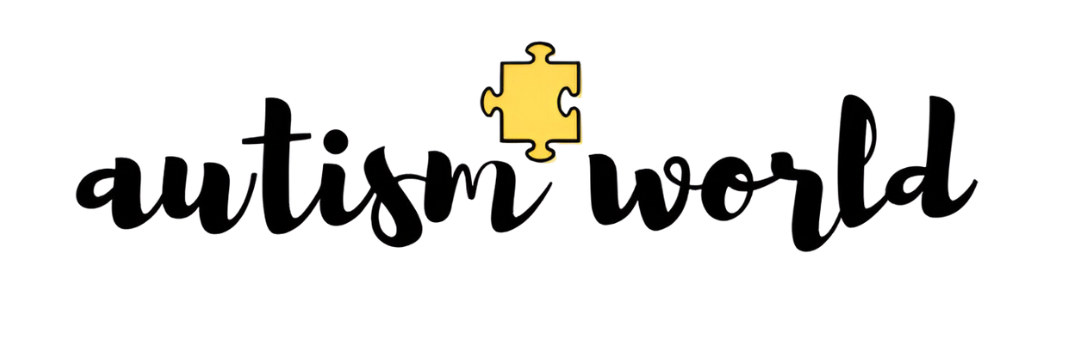With 9 years of experience in the kitchen, I’m passionate about crafting delicious recipes and sharing them with food lovers worldwide. 🍽️✨ Whether it’s a comforting homemade dish or a creative cocktail, my goal is to make cooking fun, easy, and enjoyable for everyone. Join me on this flavorful journey! 🍹🥗

Understanding the Signs of Autism in Children and Adults
What is Autism?
Autism Spectrum Disorder (ASD) is a developmental condition that affects communication, behavior, and social interaction. It is called a “”spectrum”” disorder because it encompasses a wide range of symptoms and severity levels. Some individuals with autism may require significant support in their daily lives, while others may live independently with minimal assistance. Early recognition and diagnosis are crucial, as they can lead to timely interventions that improve outcomes for individuals with autism.
Understanding autism begins with recognizing that it is not a disease but a neurological difference. People with autism often experience the world differently, which can lead to unique strengths and challenges. For example, some individuals may have exceptional memory skills or a deep focus on specific interests, while others may struggle with sensory sensitivities or social interactions. By understanding these differences, we can create more inclusive environments that support individuals with autism.
The importance of early detection cannot be overstated. Research shows that early intervention, particularly in the first few years of life, can significantly improve developmental outcomes. This is why it is essential for parents, caregivers, and educators to be aware of the signs of autism in children and adults. Recognizing these signs early can lead to a diagnosis and access to resources that can make a profound difference in the lives of individuals with autism.
Common Signs of Autism in Children
Autism signs in children often manifest in social communication challenges, repetitive behaviors, and sensory sensitivities. These signs can vary widely from one child to another, but there are some common patterns that parents and caregivers can look out for.
Social Communication Challenges
One of the most noticeable signs of autism in children is difficulty with social communication. This can include a lack of eye contact, delayed speech or language skills, and trouble understanding social cues. For example, a child with autism may not respond to their name being called or may have difficulty engaging in back-and-forth conversations. They may also struggle to understand gestures, facial expressions, or tone of voice, which can make social interactions challenging.
Repetitive Behaviors and Interests
Repetitive behaviors are another hallmark of autism in children. These behaviors can include repetitive movements, such as hand-flapping, rocking, or spinning. Children with autism may also develop intense interests in specific topics or objects, often to the exclusion of other activities. For example, a child might become deeply fascinated by trains or numbers and spend hours talking about or playing with them. These behaviors can provide comfort and predictability in a world that may otherwise feel overwhelming.
Sensory Sensitivities
Sensory sensitivities are also common in children with autism. Some children may be over-sensitive to sensory stimuli, such as loud noises, bright lights, or certain textures. Others may be under-sensitive and seek out sensory input, such as touching everything in their environment or enjoying strong flavors. These sensitivities can affect a child’s daily life, making certain environments or activities challenging to navigate.
Recognizing Autism in Adults
While autism is often diagnosed in childhood, many adults may not receive a diagnosis until later in life. Recognizing autism in adults can be more challenging, as symptoms may be less obvious or masked by coping mechanisms developed over time.
Social Interaction Difficulties
Adults with autism may struggle with maintaining relationships and interpreting nonverbal communication. They may find it difficult to understand social norms or to engage in small talk, which can lead to feelings of isolation. For example, an adult with autism might have trouble reading facial expressions or body language, making it hard to gauge how others are feeling. These challenges can make it difficult to form and maintain friendships or romantic relationships.
Routine and Repetition in Adulthood
Many adults with autism have a strong preference for routines and may become distressed when their routines are disrupted. They may also engage in repetitive behaviors, such as following the same daily schedule or performing specific rituals. For example, an adult with autism might insist on eating the same meal every day or taking the same route to work. These routines provide a sense of stability and predictability, which can be comforting in a world that often feels chaotic.
Sensory and Emotional Sensitivities
Sensory sensitivities can persist into adulthood, with some individuals experiencing heightened sensitivity to lights, sounds, or textures. Adults with autism may also have difficulty managing their emotions or stress, which can lead to anxiety or meltdowns. For example, an adult with autism might become overwhelmed in a crowded or noisy environment, leading to feelings of panic or the need to withdraw. Understanding these sensitivities can help create more supportive environments for adults with autism.
How Autism Signs Differ Between Children and Adults
The signs of autism can vary significantly between children and adults, often due to developmental differences and life experiences. In children, autism signs are often more pronounced and easier to recognize, particularly in the areas of social communication and repetitive behaviors. However, as individuals with autism grow older, they may develop coping mechanisms that mask some of these signs, making diagnosis more challenging.
For example, an adult with autism may have learned to mimic social behaviors or to suppress repetitive movements in public, a phenomenon known as “”masking”” or “”camouflaging.”” While this can help them navigate social situations, it can also lead to increased stress and exhaustion. Additionally, the impact of age and life experiences can influence how autism signs manifest. For instance, an adult with autism may have developed strategies to manage sensory sensitivities or to cope with changes in routine, but these strategies may not always be effective.
Understanding these differences is crucial for accurate diagnosis and support. It is important to recognize that autism is a lifelong condition, and the signs and challenges associated with it can evolve over time. By being aware of these differences, we can better support individuals with autism at every stage of life.
Why Early Detection of Autism Signs Matters
Early detection of autism signs is critical for several reasons. For children, early intervention can lead to significant improvements in communication, social skills, and behavior. Research has shown that children who receive early intervention services are more likely to develop essential skills that will help them succeed in school and in life. Early intervention can also reduce the need for more intensive support later on.
For adults, a late diagnosis of autism can present unique challenges. Many adults with autism may have spent years struggling with social interactions, sensory sensitivities, or emotional regulation without understanding why. A diagnosis can provide clarity and access to resources that can improve their quality of life. However, the lack of awareness and understanding of autism in adults can make it difficult to obtain a diagnosis and the necessary support.
Understanding autism signs and seeking a diagnosis can also improve the quality of life for individuals with autism and their families. It can lead to a better understanding of their strengths and challenges, as well as access to therapies and resources that can help them thrive. Early detection and intervention are key to ensuring that individuals with autism receive the support they need to reach their full potential.
Steps to Take if You Notice Autism Signs
If you notice signs of autism in yourself or a loved one, it is important to take action. The first step is to consult a professional who can provide a formal evaluation. This may involve a pediatrician, psychologist, or other specialist who is experienced in diagnosing autism. A formal evaluation typically includes a comprehensive assessment of social, communication, and behavioral skills, as well as a review of developmental history.
Consulting a Professional
Seeking a formal evaluation is crucial for obtaining an accurate diagnosis. A professional can help determine whether the signs you have noticed are indicative of autism or another condition. They can also provide guidance on the next steps, such as accessing therapies or support services. It is important to choose a specialist who has experience with autism, as they will be better equipped to recognize the signs and provide appropriate recommendations.
Supporting a Loved One with Autism
If a loved one is diagnosed with autism, it is important to create a supportive environment that meets their unique needs. This may involve making adjustments to their daily routine, providing sensory-friendly spaces, or helping them develop social skills. Accessing resources and therapies, such as speech therapy, occupational therapy, or behavioral therapy, can also be beneficial. Supporting a loved one with autism requires patience, understanding, and a willingness to learn about their specific needs and preferences.
Conclusion
Understanding the signs of autism in children and adults is essential for early detection and intervention. By recognizing these signs, we can provide the support and resources needed to help individuals with autism thrive. Whether you are a parent, caregiver, or individual seeking a diagnosis, it is important to seek help and support. Early detection and intervention can make a profound difference in the lives of individuals with autism, improving their quality of life and helping them reach their full potential.
If you suspect that you or a loved one may have autism, don’t hesitate to consult a professional. A formal evaluation can provide clarity and access to resources that can make a significant difference. Remember, understanding and awareness are key to creating a more inclusive and supportive world for individuals with autism.
Frequently Asked Questions (FAQs)
- What are the earliest signs of autism in children? The earliest signs of autism in children often include delayed speech or language skills, lack of eye contact, and difficulty with social interactions. Repetitive behaviors and sensory sensitivities may also be early indicators.
- Can autism signs appear later in life? Yes, autism signs can appear later in life, particularly in adults who may have developed coping mechanisms that mask their symptoms. A late diagnosis can provide clarity and access to support.
- How is autism diagnosed in adults? Autism in adults is typically diagnosed through a comprehensive evaluation by a specialist, such as a psychologist or psychiatrist. This evaluation may include interviews, questionnaires, and observations of behavior.
- What resources are available for families and individuals with autism? There are many resources available for families and individuals with autism, including therapy services, support groups, and educational programs. Accessing these resources can provide valuable support and improve quality of life.





